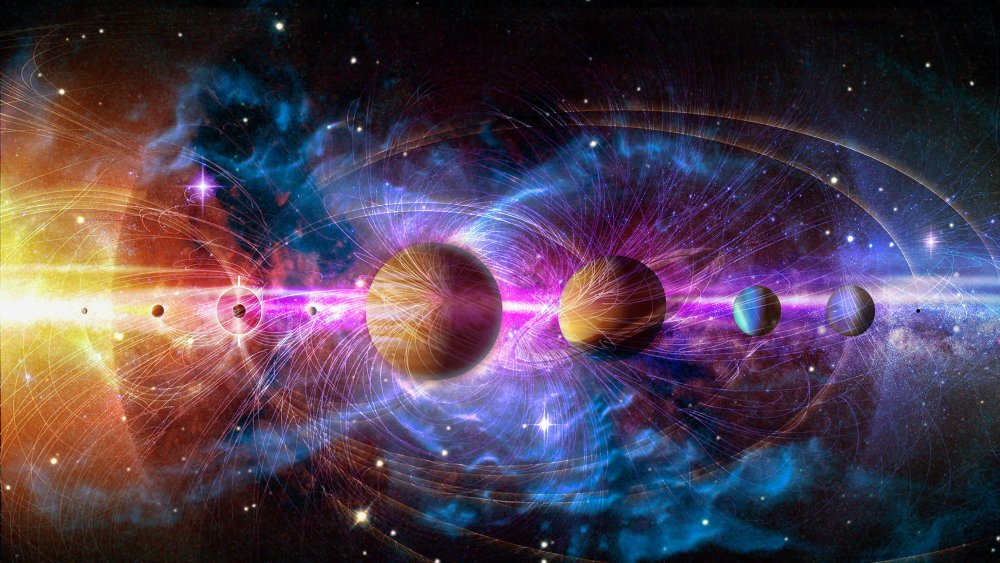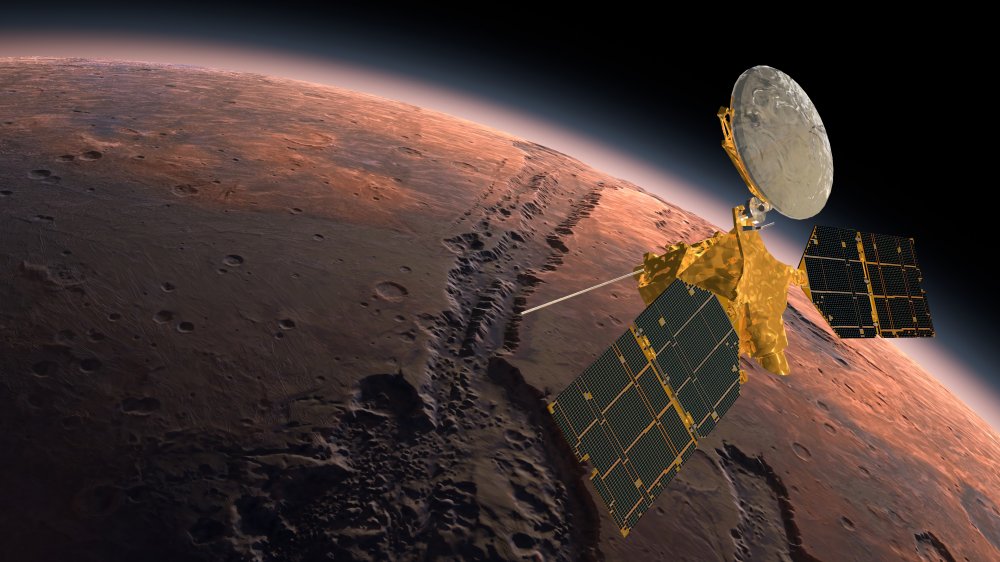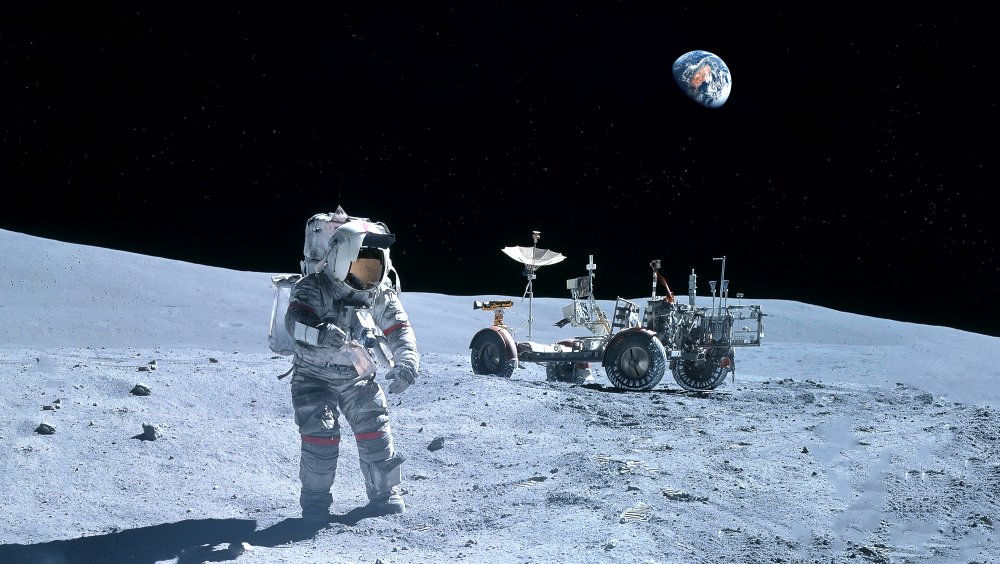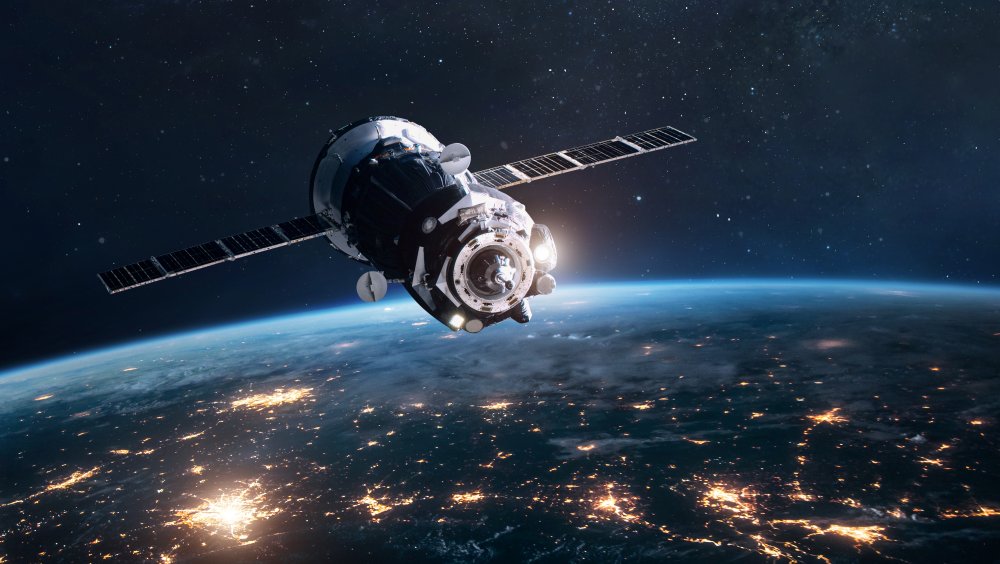How Humans Contaminated The Solar System
"Shoot for the stars," they say. We haven't quite managed to make it that far yet, but humanity has left Earth's atmosphere and touched the soil of the moon. We've sent robots to Mars with plans of getting boots on the red planet's surface in a few years. Earth has sent a handful of interstellar probes to study the universe beyond our solar system.
Space travel is incredible. With it, we could discover alien life or find a new home as our planet goes through a rapid decline in the face of manmade climate change. We have the potential to mine asteroids for rare metals and find substances we don't have here on Earth. The key to scientific discoveries believed to be out of our reach could be hidden somewhere out there among the stars. We spend billions of dollars every year trying to make headway in outer space, and now, that drive has spread not only to governments but to the private sector as well. Why shouldn't it? We're curious animals with a thirst for knowledge that goes beyond our lone inhabitable planet.
In the search to sate our interplanetary curiosity, we've discovered a great many things, but in the process we've also managed to contaminate our solar system.
There's life on Mars and we put it there
Life on Mars has been a theme in sci-fi for decades that isn't as far off as you'd think. To begin with, many scientists believe the conditions on the planet in its earlier years may have presented a proper environment for life. Probably not big walking creatures, but microscopic organisms may have been a thing. According to Scientific American, some scientists even think it's possible for those microorganisms to be living somewhere deep beneath the planet's surface. Of course, the question "Is there life on Mars?" has an answer, and the answer is "yes."
There is life on the red planet, and humans are the ones who put it there. In 2015, according to The New Yorker, NASA admitted that we've left our own microorganisms on the planet's surface each time we've landed a rover on Mars. The first, though it stopped communicating within seconds, was a Soviet rover in 1971, and Earth has landed five more since then. Each time one of those rovers touched the surface, they shed bacteria, fungal spores, and other microorganisms. With each new discovery we make on Mars, we learn that it has more habitable conditions than previously thought, like liquid water on the surface, and that's a problem. NASA scientists say these microbes could hibernate for millions of years on Mars, but they could also infest the planet if they manage to find any of that liquid water and then thrive.
We crashed foreign creatures onto the Moon
The Moon would have a similar problem to Mars in that there could be (and probably are) microorganisms accidentally brought to the surface each time we lovely Earthlings sent people or robotic devices to the orbiting rock. But in the case of The Moon, we may have accidentally dumped a bunch of creatures we were intending to study.
In 2019, an Israeli lunar lander found itself in a bit of trouble and crashed into the Moon's surface. Luckily, the only living things on the lander were tardigrades, also known as "water bears," and there were no human casualties. Unluckily, there might be hibernating tardigrades hanging out on the lunar surface, according to The Scientist. It might not sound like a problem, but hibernating tardigrades can survive for a long time in the radiation and vacuum found on the Moon. They won't come back to life fully without Moon water, but they will make the surface less "clean" in terms of scientific study.
To be fair, Earth has already left its moon in a less-than-clean state since we tracked microbes onto its surface with our first steps. Not to mention the bags of fecal matter the astronauts left behind, as Vox reports.
Space trash may become a real problem
As if leaving microorganisms around the solar system like a snotty toddler wasn't bad enough, we've also littered the heavens. We know it might be a problem someday. There's everything we've left behind on the Moon and on Mars, the probes we've sent deep into space, and probes like Venera 7 that have dropped onto Venus. Closer to home is the trash currently orbiting Earth itself.
According to NASA, there are millions of pieces of space junk — "orbital debris" — orbiting the Earth. Broken satellites, pieces of spacecraft, rocket bits — you name it. Those millions of pieces are flying around the planet eight times faster than the average bullet. The debris could be a serious impedance to future space exploration if the bits blast holes into our spacecraft before we make it all the way out of Earth's orbit.
Humans also send material into space because we can. We can all remember the time when a certain billionaire thought it would be a fun idea to launch a certain electric car with a dummy driver into an orbit around the Sun. The more we see space travel being explored in the private sector, the more litter we're bound to see in our solar system.



